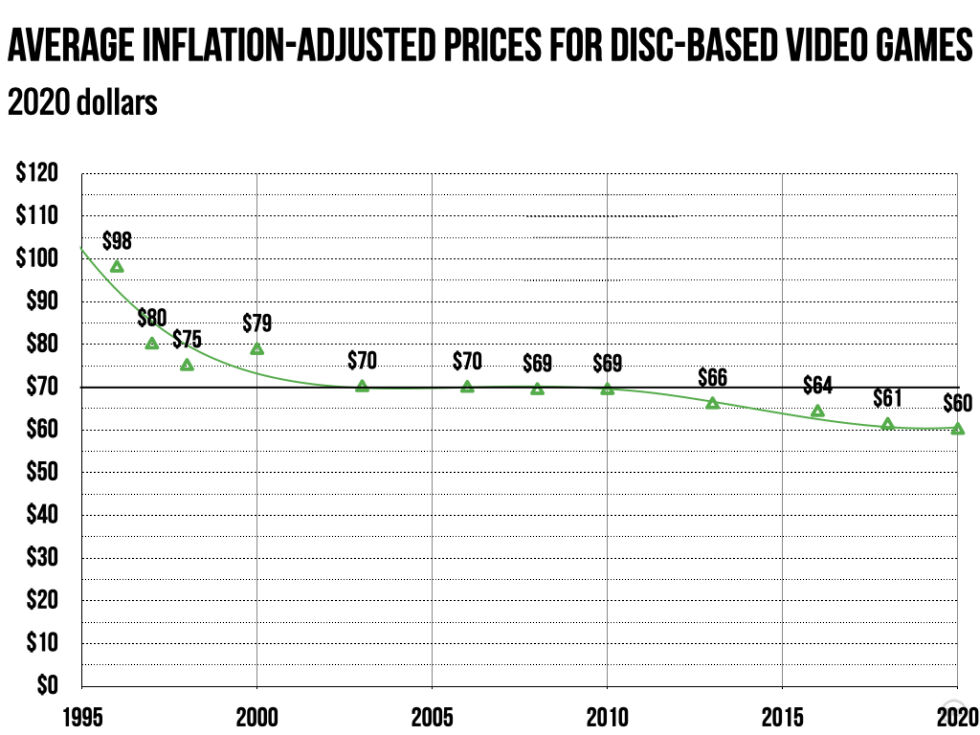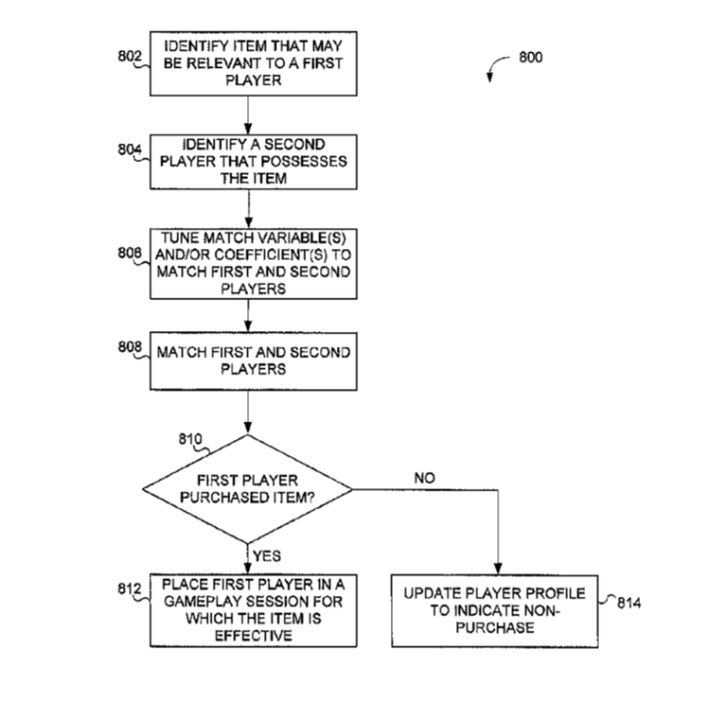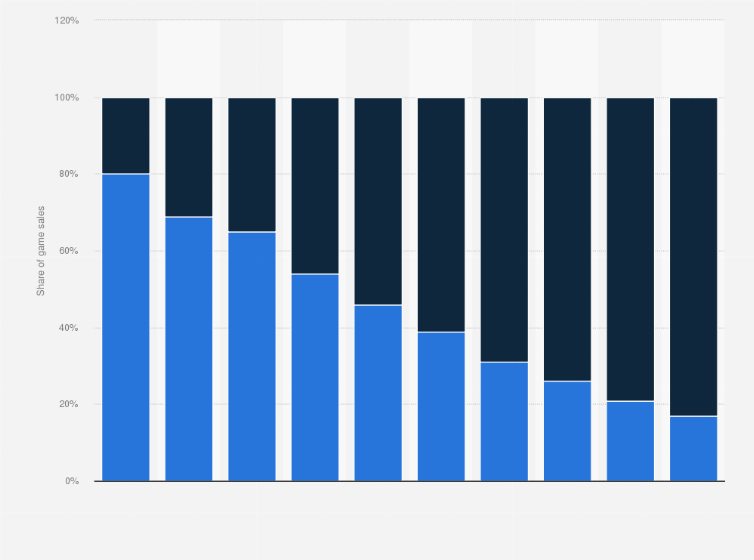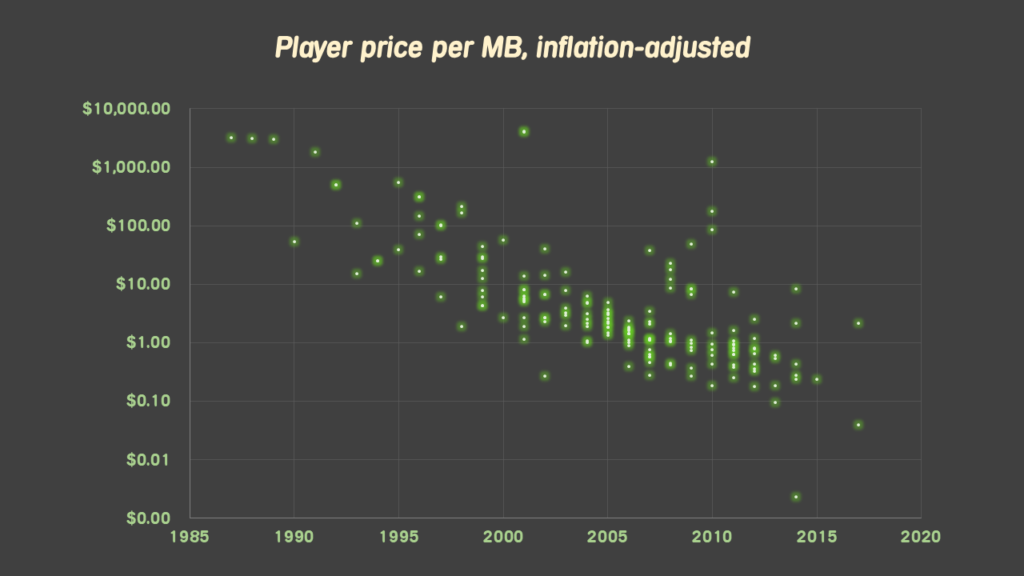After the announcement a few years back that NBA 2K21 would cost $70 (US), it was noted that other publishers were considering the same, raising standard prices from $59.99 to $69.99 (USD, or even 80-90$ here in Canadia) citing the claim that development costs have risen, while prices haven’t. While this is true to an extent, to the best of my abilities I will demonstrate why it’s more realistically the result of opportunistic behaviour and penny-pinching profit margins at the expense of the end consumer (you and me). In my opinion, this precedent is detrimental to the gaming community and industry. It’d be highly anti-consumer to allow this pricing model (or worse) to standardize alongside extreme modern monetization in video games. One only has to look at Dragon’s Dogma 2’s rocky launch to see ugly monetization models making their way into 70$ titles.
The Cost
While segments like this from Business Insider claim:
“…games cost tens of millions of dollars to develop, and the $60 for each one, you have to sell tens of millions of copies to make up for the amount of money you’ve invested, which is why there are so many other ways that game companies have tried to figure out how to subsidize how expensive those game
projects are.”
I call bullshit (not that they cost a lot to develop, but rather the extent of cost reimbursement). However, opinions are like assholes: everyone has one and a lot of them are shitty: so let’s do the math instead, using a fairly large release such as Borderlands 3. While not a massive success – still managed to pull moderately good sales. Borderlands 3 & its DLC reportedly cost $140 Million to develop (unknown if marketing costs are included, though can average $20-100 million for AAA titles) and reportedly sold 5 million copies within their first 5 days. Some may ‘what-about’ in regards to the misleading claim that 5 million copies were actually sold to players, however, disregarding that profits were still made by Gearbox during the bulk sales to wholesale retailers. So, the average $60 per game at 5 million copies is still $300 million.
Let’s be generous and assume they spent $100 million on marketing, that’s a worst-case scenario of $240 million in cost vs. $300 million in sales; that’s $60 million in profit.

Alternatively, for an exaggerated view let’s take a look at three of the most expensive games ever made (lists vary a,b), but for our uses let’s examine Destiny, Grand Theft Auto V, and Call of Duty: Modern Warfare 2. These three cost a staggering $500, $265 & $200 million respectively (not accounting for inflation, Star Citizen or 2077). Destiny broke even on pre-orders and day-one sales alone, GTAV has officially sold 135 million copies (at $60 per that’s $8.1 billion lifetime revenue), and Modern Warfare 2 sold over 15 million copies by mid-January 2010 making $1 Billion in revenue. For comparison’s sake, the highest-grossing films ever (to date) are Avengers: Endgame at $2.798 Billion and Avatar at $2.790 Billion. While those are impressive numbers, even combined they don’t touch the earning capabilities of the Grand Theft Auto goliath.
Why We Should, Why We Shouldn’t – A YoYo tale
Forbes even takes the stand attesting to 3 reasons why games shouldn’t be more expensive. However, that doesn’t hold much weight, considering their statements in 2015 claiming “Video Games Should Be More Expensive”.
The primary driving factor for the opinion that games should cost $70 is in articles like this, accounting for inflation, while disregarding a multitude of other components. The current game’s price is $79.99 CAD (with some publishers like Capcom’s Dragon’s Dogma 2 trying to push $90). Historically (here) games have been as low as $49.99 around 1995. Using the Bank Of Canada Inflation Calculator that’s $91.25 in 2024 (modern inflation is particularly heavy while the Canadian dollar is weak). This is where the assertion that game prices should rise comes from. As we can see here, wages have stagnated in the West (US & Canadian Data comparisons) thus impacting consumer purchasing power. But in my opinion, this view is extremely derivative of the current state of play. Let’s talk about why.
See, I too am “old enough to remember $70 cartridges”, it’s also easy to see blatant opportunistic & predatory behaviour; the simplest of reasons being that wages have not risen in tandem with inflation in recent years. I also remember when players were told that digital distribution would make games cheaper, avoiding product acquisition, manufacturing, handling, transportation costs, and retail cuts. Not to mention cutting down on unsold physical waste and in some cases potential platform royalties. And that’s not even taking into consideration publishers cutting down on lost profit through used sales, with digital-only consoles encouraged by tangible price differences in hardware. Effectively dabbling in discussions of false economies, but that’s a conversation for another time. Back on topic:




The article utilizes fancy graphs to indicate that game prices are comparatively low and that people should be thankful to sit down and pony up. However, I feel that this data misrepresents the reality of the situation: ignoring profits higher than ever before and lower offset costs that potentially balance or outweigh the rising cost of development. After all, how else would (formerly) Bobby Kotick and Andrew Wilson, CEOs of Electronic Arts and Activision/Blizzard respectively, get listed as two of America’s most overpaid CEOs? Stock market trends for these corporations speak for themselves, just look ATVI & EA over the relevant time frames.
Some might specifically point out the 28% share drop for ATVI in November 2018. This is due to Wall Street’s displeasure with the reported $1.51 billion in revenue. While this is less than the previous $1.62 billion, it supports the claim that limitless profit growth is not practical or sustainable. Shareholders were still spooked even though: “Both revenue and earnings exceeded management’s guidance for the quarter.” The only appeasement for these company expectations is to milk players for more cash than previously before, again, and again until it collapses under the weight of its unsustainability.
A perfect example of this would be the Star Wars: Battlefront II controversy. Exemplified here was a situation where greed tipped the balance, sparking vitriolic backlash sizeable enough to tarnish EA’s (admittedly already not-so-sweet reputation). Better yet EA was pressured to react officially, repealing detrimental aspects of the game. As one could speculate, perhaps this drives the extremely safe iterations of the same old IP’s year in and year out. However, that calls into question the long-term viability of yearly carbon-copy installments (with changes that could be effectively achieved through DLC) selling for full retail price. Although that also may be an entire discussion for another day.
The Breakdown

Let’s look at how much could be potentially saved in recent market landscapes. We will work in USD for ease of use, and simplicity’s sake. Right off the top; cases similar to Epic Games that launch titles on their own platforms avoid royalties and shave off $7, and another $4 for distribution of costs and goods. Now, keeping in mind this was back in 2010 when the digital/physical media split was 31%/69%. This has since grown, saving digital costs for at least 83% (2018) of sales. Additionally, this disintermediation heavily affects retailer margins as new game clients rise like: Epic Games Store, Origins, GoG or Uplay. That’s another potential 15% savings on expenditures compared to the gaming landscape ten years ago. These are some of the same driving forces that have pushed other mediums towards proprietary platforms such as HBO, Disney Netflix & Amazon. Cut out the middle man and that’s a potential 0-26% cost savings that nobody talks about, factored into at least 83% of all sales. If all those expenditures aren’t being spent, where’s the money go? My bet is in those juicy CEO bonuses that EA shareholders are tired of paying out.
More Than Meets The Eye
Let’s be crystal clear about this next statement: physical games are not sold at a loss that would
be bad business plain and simple. Even if they were, the offset of digital games and the associated costs saved would more than cover almost any losses on physical copies. But this isn’t the case – physical games do make a profit. And the profit doesn’t end there; purchasing a game in 2020 is oftentimes more like paying the price of admission.
With DLC & microtransaction sales ballooning, these companies know that the real money is
in high-return low-cost digital content. GTAV’s Shark Cards brought in $500 million alone – that’s more than most games see in sales. Strauss Zelnik CEO of Take-Two Interactive (Rockstar Games wholly owned by) claims “We are convinced that we are probably from an industry view undermonetizing on a per-user basis.” Large publishers would love nothing more than to line their pockets with as much money as possible, after all, what business wouldn’t? Gaming has gone corporate; gone are the days of passionate developers babying passion projects to fruition. Video games have become fodder to be industrially churned out for the masses while min-maxing effort-profit ratios every step of the way. I understand this may sound hyperbolic, however, outside of startups & indies (some AAs); it isn’t far from the truth.
Paraphrasing – they already believe we aren’t paying enough. I beg to differ when deplorable tactics outlined in conferences like “Let’s go whaling” actively encourage psychologically predatory monetization to maximize revenue at player expense. It doesn’t end there, though, as Activision filed for a matchmaking system patent that uses exposure to paid content as a primer for player purchase. Or EA’s patent using urgency and time sensitivity to dynamically & adaptively pressure players into spending more. Below we can see (from Activision): “A system and method is provided that drives microtransactions in multiplayer video games.” As this may all seem unrelated, the justification for bringing these up is the additional revenue streams tied to a game that often goes unreported. As these revenues often aren’t included in sales figures they aren’t accounted for in a game’s profit, and by extension not taken into consideration when directly comparing development costs.

It Really Is Greed
During these record profits, it was also deemed appropriate to let go around 800 employees from Acti/Blizz, yet somehow the justification for higher prices and their executive staff bonuses resonates, or at the very least continues. According to Gamespot on February 3rd “revenue from EA’s microtransaction bucket–called Live Services–reached nearly $1 billion.”
Despite previous failed attempts to push the bottom line to $70, 2K did manage to shake the $60 norm. Ubisoft held out for longer than most but now followed suit with the hilariously named AAAA game. Bearing in mind that shareholders see zero value in stagnation – only growth. This means that if profits aren’t constantly rising, they’re “failing” which leads to an unsustainable ecosystem. The current standard has been mostly held in place by a glass ceiling players have placed on how much they’re willing to pay. The majority of players simply won’t buy a game at $80-90, and that has been a contributing factor. With that in mind, if the discussion can be framed in a way that leads players to believe it’s a developmental necessity – they’ll openly advocate for anti-consumer practices. It doesn’t have to objectively be in our best interests, we just need to be convinced that it is.
If we are to consider rising development costs as the primary justification for higher game prices I would point out the extreme success of indie games like Hellblade: Senua’s Sacrifice (Hellblade: Senua’s Sacrifice) that only needed 300,000 sales to make back its small $10 million budget, and came out strong with 1 million copies sold. Or Children of Morta: a Kickstarter project born of $65,000 that “Covered Costs of Development Through PC Sales Alone“. Then there are stories like that of the development of Undertale and its humble beginnings. Arguably these would be the exception to the rule, however, I would assert that the same be true for exorbitant development expenditures.
How Much Is Enough?
Statistically speaking, Reuters stated Video Games as the most profitable category of the entertainment industry at $116 billion yearly revenue in 2016. That was $138 Billion by 2018, and $152.1 billion in 2019 – $187.7B last year. Those numbers dwarf Hollywood and make the music industry look like child’s play. And the majority of those sales are turning digital, with 83% buying online, and only 17% buying physical according to Statista in 2018 – thus the importance of expenditures saved on physical.

At the end of the day, I don’t expect a revolution in game prices – that’d be unreasonable. Nevertheless, taking advantage of the spread of falsely represented statistics to squeeze another $10-20 dollars out of players in an age of already extreme monetization is unequivocally greasy and shouldn’t go unchallenged. On average I believe game prices should remain the same, excluding digital 1st party ecosystems where the cost savings should be extended to the customer.
While firing hundreds of employees, saving millions in a variety of costs, taking unreasonable bonuses, and expanding monetization models, it is not unreasonable for players to be apprehensive. Players gave producers an inch, and they took every damned mile in each direction. While I may not be a qualified statistical analyst, as far as I can tell, neither are the individuals making these outlandish assertions. With that in mind, I have tried to include more data points than direct inflation comparisons per dollar.
The most thorough interpretation of modern game economics regarding this topic that I could find was from an excellent source: Raph Koster, a game designer/entrepreneur (Ultima Online, Star Wars: Galaxies). Raph has been involved in nearly every aspect of the games industry and has the clear experience and qualifications to make accurate extrapolations from the current landscape. As Raph states “Is it “too expensive”? Well, that’s a value judgement.” This is entirely true, as the matter of worth is subjective. Raph also does an excellent job accurately depicting cost per byte, which has plateaued a bit in recent years. Essentially it comes down to a multitude of variables, and how developers can mitigate risk. As Raph also states “Yes, indie games with distinctive art have managed to break through so everyone will cite counterexamples, but looked at statistically, it’s something like 99.9% don’t.” Drawing back to the exception not being the rule, I’d apply this same logic to the alternative.
This was a highly informative blog post in 2017 that collects his thoughts, while not a pretty analysis of the future – it is an accurate one. Raph does well at playing devil’s advocate but appears to gloss over cost savings for developers in recent decades. Not to say his perspective isn’t valid and justified, just that it’s a massive topic with many factors to consider. Something I may very well be guilty of overlooking as well. Raph revisited the topic in 2018, in an updated deep-dive using development costs of a varied 250 games excluding marketing costs, and updated for inflation. Unexpectedly, these statistics also charted an upward trend in development costs. Returning to the concept of measuring cost/byte, we can see a content investment ceiling that I imagine is closely anchored to player willingness to pay $59.99. While I cannot substantiate that claim, it stands to reason that developers would not sink more cost into development than they could recover in $59.99 sales. This is where unquantifiable variables/risks determine success or failure – not players’ unwillingness to shell out another $10.

Even if/when the cost/byte reaches zero as predicted, and games are entirely free, we are reminded that these companies are businesses in a capitalistic society. British MPs aren’t fooled:
“At one point, Canon Pence claimed it was inaccurate to define Epic as a company which makes money from people playing its games, to which Collins responded: “You’re not a charity.”
Free-to-play games are a single cog of a gearbox, an induction into a convoluted and sometimes predatory business model. Regardless of how we choose to split the hairs of cost, it comes down to the fact that: Video games are more profitable than ever before with projections showing no signs of slowing. The statement that game prices must rise to combat escalating development costs is demonstrably false. I’m certainly not the first to assert this, as many others have informatively addressed these topics. None of this is anything new.
At the very least if the stated case doesn’t resonate we’d love to start a conversation among players and consumers of these games and products. Do you genuinely feel paying $70-90 (currency varies) is fair? What’s the highest you’d be willing to pay? Do we accept the inevitability of shifting economic models that dominate the industry, as business as usual? Or, do we demand a higher standard and further transparency from the world’s largest entertainment industry? Let us know your thoughts in the comments, and thank you for being a part of the discussion.
And if you enjoyed this content (first of all thank you), you may find more to like over at our YouTube and Twitch! Or if you want to shoot the shit with us, feel free to join us on Discord or say hello on Facebook (We know, we’re old), Instagram, or Twitter-X.


Thank you for your dedication to providing such valuable content on your website!